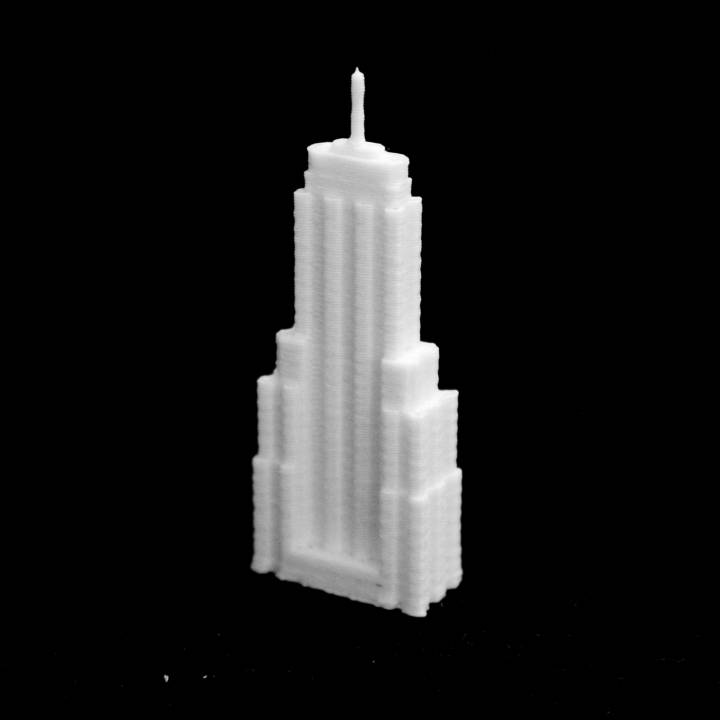
Palmolive Building in Chicago, Illinois
myminifactory
One of Chicago's most magnificent examples of art deco architecture, The Palmolive Building has changed with the times and adapted as the city modernized around it. But the building remains as classic Chicago as runny eggs at a Loop diner, or a fedora hat worn on LaSalle Street. The Palmolive Building presents a narrow side to the winds of Lake Michigan, while broadly looking over the heart of Chicago. Its setbacks have setbacks and the whole thing looks vaguely reminiscent of those shiny, stylized steam locomotives that only seem to exist in French poster art of a certain age. The building began life as the headquarters of the Colgate-Palmolive-Peet company. Its placement was an important visual cap to mark the end of Michigan Avenue at a time when the boulevard was a fairly uniform collection of posh shops and apartment houses. Like so many companies that got their start in Chicago, Palmolive would move on. It left for New York in 1934 but the building kept the Palmolive name until a publishing company called Playboy Enterprises moved in in 1966 and give its name to the skyscraper. As the publishing industry collapsed at the turn of the 21st century, Playboy moved to smaller offices in the neighborhood and this building once again became known as the Palmolive Building. As the decades passed, the city grew up around The Palmolive Building. Today, the art deco tower provides an important visual and stylistic link in a progression from the historic Drake Hotel to the still futuristic John Hancock Center. Though it once stood proudly as a sentinel over North Michigan Avenue, today The Palmolive Building is lost in the city's skyscraper forest. As its neighbors grew taller, they also grew more demanding. The Palmolive Building's historic aircraft beacon was snuffed out when the residents of neighboring high rises complained about the light. In the 1980's, the Chicago architecture firm of Skidmore, Owings & Merrill renovated the lowest floors into better retail space. From a shopping standpoint, it was a success and works well with the rest of Michigan Avenue. But the result is divorced enough from the tower above that one can walk right past The Palmolive Building and not realize it's there. And then in 2004, the process began to turn this office building into residences. The conversion by architect Laurence Booth was successful, with little visual impact on the building. In fact, the building is somewhat more interesting today as the people who live in The Palmolive Building have installed art, plants, and even putting greens on the art deco setbacks they've turned into open-air patios. Conversions of so-called "vintage" buildings into residences are rare for such tall buildings. But the units generated are often sought after as pieces of art, themselves. Quick Facts Construction start: 1927 Construction finish: 1929 Designed by: Holabird & Root Renovated: 2004-2005 by Booth Hansen Associates Type: Skyscraper Stories: 37 Maximum Height: 565 feet / 172 meters (Credit; Chicago Architecture) This object is part of "Scan The World". Scan the World is a non-profit initiative introduced by MyMiniFactory, through which we are creating a digital archive of fully 3D printable sculptures, artworks and landmarks from across the globe for the public to access for free. Scan the World is an open source, community effort, if you have interesting items around you and would like to contribute, email stw@myminifactory.com to find out how you can help.Scanned : Photogrammetry (Processed using Agisoft PhotoScan)
With this file you will be able to print Palmolive Building in Chicago, Illinois with your 3D printer. Click on the button and save the file on your computer to work, edit or customize your design. You can also find more 3D designs for printers on Palmolive Building in Chicago, Illinois.
